multi-sided market
description: an intermediary economic platform having multiple distinct user groups that provide each other with network benefits
24 results
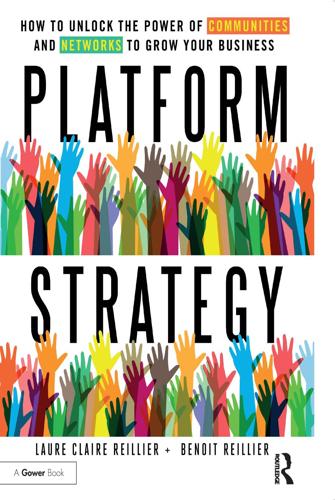
Open for Business Harnessing the Power of Platform Ecosystems
by
Lauren Turner Claire
,
Laure Claire Reillier
and
Benoit Reillier
Published 14 Oct 2017
Schmalensee, Matchmakers: The New Economics of Multisided Platforms, Cambridge, MA: Harvard Business School Press, 2016. As of 26 September 2016. GMV stands for gross merchandise value and is used in online platforms to indicate a total sales value for merchandise sold through a particular marketplace over a certain time frame. Typically final value fees are between 5% and 11% on eBay. 30 What is a platform business? 20 In fact, prices could even be negative on one side of the business on a sustainable basis. See David S. Evans and Richard Schmalensee, ‘The Antitrust Analysis of Multi-Sided Platform Businesses’ (Coase-Sandor Institute for Law and Economics Working Paper No. 623, 2012). 21 Andrei Hagiu and Julian Wright, ‘Multi-Sided Platforms’, Harvard Business School Working Paper 12-024, October 2011. 22 P.
…
Index Accor Group 3, 201, 211 add-on platforms 77, 88–9, 92, 102, 105 advertising 37, 43, 45, 67–8, 93, 97, 99–100, 142, 144, 183 AdWords (Google) 67, 69, 183, 184 Airbnb 1–2, 3, 4, 15, 24, 168, 188; brand 51–2, 153, 169–70; business model 45; credibility 158–9, 163; feedback 35, 52, 160, 179–80; insurance 164; market sizing 79; match 47, 52, 83; value propositions 83, 95, 123 Alibaba 1, 15, 28, 34, 123, 124, 132, 208 Amazon 8, 12, 13, 14, 15, 125; business model 48, 59, 63; conflict resolution 163; ecosystem 28, 57–8, 59–61, 62, 70; feedback 35, 160; home automation 212 Amazon FBA (Fulfilment by Amazon) 58, 61–2 Amazon Marketplace 26–7, 48, 57, 58, 59, 60, 61–2, 84, 111 Amazon Prime 58, 61, 62 Amazon Web Services (AWS) 58 analytics 50–1, 52, 110, 123, 162, 187, 208, 213; see also data capture Android operating system (Google) 58, 67, 185–6 anticompetitive behaviour 173, 182, 186 APIs (application programming interfaces) 52, 183, 197 Apple 5, 8, 13, 14, 28, 193; App Store 32, 38, 63, 64–6; business model 54, 63, 66; ecosystem 63–6, 70, 132; iPhone 63, 65, 123; iTunes 63, 65 application programming interfaces see APIs Ariba 96 Artfire 143 attract 6, 15, 24, 47, 167; ignition 75, 91–6; maturity 75, 121–2, 131; pre-launch 74; scaling-up 75, 105, 107, 110–14, 117 audience builders 24 AWS see Amazon Web Services balance 48, 50, 106, 111–12, 114, 117, 124, 144–7, 150 Bezos, J. 57, 58 big bang launch strategy see event strategy BlaBlaCar 7, 154, 157, 158, 159; insurance 164; pricing strategies 147, 150, 156; scaling-up 112, 115 BorrowMyDoggy 99 bottlenecks 51, 73, 75–6, 86, 98, 99, 100, 101, 108, 112, 116 bowling pin strategy 54, 95, 109 brand 14–15, 51, 76, 118, 153–70 bundling strategies 61, 131, 182 business architecture 22, 66, 74, 80, 91 business models 6–7, 11, 22, 27, 59, 62, 63, 68, 132; platform businesses 6–7, 11, 22, 23, 27–8, 41–54, 70, 87, 138, 146, 177, 199, 200, 212; traditional businesses 62, 73, 91, 193, 211 card platforms 6, 23, 80, 126 catalyst businesses 23–4 Chesky, B. 1, 2, 169 218 Index Choudary, S. 25 communications platforms see Snapchat; WeChat; WhatsApp communities 44–5, 51, 78, 94, 112, 118, 125, 170 compensation strategy see dollar strategy competing platforms 131, 140, 149 competition 22, 25, 121, 130–2, 140, 173, 193 competition authorities 122, 131, 173-5, 186, 197 complements 31, 38, 130, 131 conflict resolution 126, 163, 167 connect 4, 45–6, 62; ignition 98; maturity 97; pre-launch 85; scaling-up 115, 117 consistency 159–60, 203 contributions 78, 82-3, 94, 118 control 52, 53, 123, 140–1, 162 core transactions 49, 52, 85–6, 98–101, 125, 168 correction activities 162 Craigslist 34, 95, 167 credibility 156, 158–9, 195 critical mass 31, 35–6, 37, 46, 73, 80, 121 cultural meme 97 customer acquisition 93, 107, 127; see also platform participants customer experience 36, 48, 53; maturity 108, 111; pricing strategies 139, 140–1; scaling-up 162 data capture 187; see also analytics dating platforms 13, 36, 48, 50, 95, 166, 176 delay strategy 195 Deliveroo 95, 111, 133, 170, 208 demand coordinators 24–5 denial strategy 194 denigrate strategy 194 deter strategy 194–5 Didi Chuxing 15, 132 digital platforms 4, 5, 12, 17, 73, 157, 167 direct network effects 34–5 direct platforms 80 disintermediation 126, 147–8 dispute resolution see conflict resolution dollar strategy 196 dynamic capabilities 196, 199, 200, 201 eBay 4, 15, 22, 48, 49, 53–4; brand 169, 170; business model 21, 27; connect 4, 85; feedback 159, 160; ignition 54; network effects 33, 34; pricing strategies 129, 140, 144, 146; scaling-up 108, 112, 115, 208; value propositions 83, 112 economic value 4, 14, 197 economies of scale 31, 32–33 ecosystems 6, 13, 17, 26–8, 180–1, 186, 207, 211; Amazon 26–7, 57–8, 59–61, 62, 70; Apple 63–6, 70, 132; Facebook 28, 70; Google 66–7, 68–9, 70, 132, 180–1, 185–6; Microsoft 70, 130, 132 enablers 51, 52, 87; ignition 101; maturity 128; pre-launch 87; scaling-up 118 Etsy 84, 87, 94, 110, 132, 146, 210 Evans, P. 14, 24, 25 event strategy 96 ex ante regulation 173, 188 ex post regulation 173 externalities 31–3, 65, 175, 180 Facebook 8, 13, 14, 52, 124, 131, 163, 168; ecosystem 28, 70; ignition 95, 96; network effects 35; pricing strategies 149; scaling-up 107, 166; search results 124 fast follower strategy 199 fear barriers 168–9 feedback 32, 34–6, 47, 77, 98, 100, 101, 108, 110, 111, 125, 160, 165, 188 Fulfilment by Amazon see Amazon FBA gaming platforms 35, 69, 97, 145 Gawer, A. 14, 25 Gebbia, J. 1, 169 Google 7, 13, 14, 67, 163, 180–6; AdWords 67; Android operating system 67, 185; brand 169; business model 50–1, 68; ecosystem 66–7, 68–9, 70, 132, 180–1, 186; home automation 212; search results 125; YouTube 67, 69, 131, 182 Google+ 69, 182 Index governance 51, 76, 140, 165, 167; prelaunch 87; trust framework 155, 157, 162, 164–70 Gumtree 132, 143 Hailo (MyTaxi) 93, 185 HiGear 163 home automation 212 Honda 27 hotels 1, 3, 7, 79, 179–80 IBM 14, 26, 194 ignition 73, 74, 91–102; eBay 53–4; Facebook 95, 96 indirect network effects 34–5 indirect platforms 80–1 innovation 140, 170, 174; maturity 127, 128; regulation 174, 186, 199 Instagram 70, 99, 107, 110, 133 insurance 164 intervention 175 intimacy 156 IT infrastructure 52 key enablers 51, 52 Kickstarter 78, 109, 210 La Belle Asiette 93–4, 99 labour laws 177 Launchworks 21, 157, 206, 208 leakage 49, 126, 147–8 leverage 61, 62, 70, 88, 124–5 linear businesses 6, 12, 41–2, 44, 52 LinkedIn 49, 70, 100, 107, 143, 150, 159 liquidity 33, 52, 143; ignition 99, 101; scaling-up 117 listing fees 144 Lyft 15, 132, 174, 176, 202 management principles 6, 7, 207 management rules 7, 17 market failures 167, 175–6, 187 market makers 24–5 marketplace platforms 12, 15, 48, 26, 59, 61, 85 marketplaces 6, 26, 64, 49, 59, 84, 85, 208 219 market power 37, 173–6, 180–3, 186, 197 market sizing 79–80 Mastercard 5, 23, 26, 80, 134 match 75; ignition 97–101, 115; maturity 124; platform participants 47–8, 52, 84–5, 95; pre-launch 86; scaling-up 114–15 maturity 73, 75–6, 121–2, 127–8 media companies 25 membership fees 139, 143–4 meshed communities 94–5 Microsoft 13–14, 23, 28, 63, 65, 70, 125, 143; ecosystem 70, 130, 132; home automation 212 minimum viable product see MVP monetization 50, 67, 86, 100, 116, 142, 147 MSP (multisided platforms) 25, 46 multihoming 36–7, 149, 176, 177 multisided markets 5, 23–4, 46 multisided platforms see MSP MVP (minimum viable product) 91, 100–1 MyTaxi 93 negative externalities 32, 180 Netflix 26, 197 network effects 33–5, 35, 48, 52, 68, 99, 133, 176; positive 48, 115, 126, 133, 142, 149 networks 31, 33–5 North Star metric 86, 100, 119 on-boarding processes 107–8, 168 Onefinestay 200–1 online platforms 11, 50, 51, 162 OpenTable 93 operating systems 5, 6, 25, 34; Android 58, 67, 185–6 optimize 50, 76; ignition 100, 101; maturity 128, 130; pre-launch 74, 86; scaling-up 116 over-regulation 174 Parker, G. 23, 25–6 partners 45, 79, 128 payment platforms 6, 24, 48 PayPal 95, 131, 187 performance metrics 100, 117, 127 220 Index personalization 124 piggybacking 95 platform balance 111, 117, 128, 144–6 platform businesses 4, 5–7, 11–14, 205, 207, 212, 214; definitions 21, 24–8 platform business models 4–7, 21–2, 27, 45–7, 146, 199, 205, 207, 212, 214 platform development 73, 77, 88; ignition 73, 75–6, 91–101; maturity 73, 75–6, 122, 125, 126, 128, 130; pre-launch 50, 73, 74, 75–6, 77–8, 82–7, 87, 169; scaling-up 73, 75–6, 91, 105–18, 169, 176 platform disruption 193–9, 201–3, 210–11; traditional businesses 132, 193–4, 206, 198–201 platform ecosystems see ecosystems platform fit 75–6, 91, 92, 100, 105, 169 platform management 6–7, 17, 161, 168 platform owners 79, 84, 95, 100, 105 platform participants 35, 47, 48, 51, 78–80, 113, 142, 165; connect 98; ignition 91, 101; match 35, 84, 97; maturity 121–2; pre-launch 78–9, 86; trust framework 51, 158, 160–1 platforms 11–12 Pokémon Go 97 Porter, M. 6, 42–3 positive externalities 31, 32, 65 positive network effects: match 48; maturity 111, 114; pricing strategies 126, 142, 149; scaling-up 117 pre-launch 73, 74, 75–6, 77–8 premium services 142–3 price discrimination 137–8, 143 price elasticity 37, 137 pricing 50, 81, 116, 126–8, 137, 150 pricing friction 141–4 pricing models 139, 141–4, 146 pricing strategies 23, 138–9, 140, 145–50 producer acquisition 108–9 producer retention 108, 121 producers 78, 107–8 Quora 110, 159 Reddit 49, 78, 84, 94, 209, 210, 213 regulation 167, 173–9, 186–9 reliability 156 retention 47, 107–8, 111, 122 risk management 163 Rochet, J. 23–4 rocket model 46, 51, 73, 82, 116; ignition 73, 74, 91; maturity 73, 122; pre-launch 73, 74; scaling-up 73, 162 Ruby Lane 143, 166 SAP 123 scaling-up 73, 105–6, 116 Schmalensee, R. 24 search results 48, 50, 52, 67, 98, 114, 124, 180–1 self-driving cars 67, 211–12 sharing economy 8, 16, 164, 208–11 single homing 36–7 Snapchat 16, 110 Spotify 123 stakeholders 74, 79, 82, 210 start-ups 15 Stootie 98 strategic enablers 51, 101, 118 substitutes 38 talent platforms 205–6 Taobao 124–5 TaskRabbit 108, 148 taxi market 7, 24, 80, 93, 131, 174, 176, 178, 196 Tesco 27 Tinder 13, 96, 166 tipping point 36 Tirole, J. 7, 23–4 traditional businesses 4, 11, 13, 25, 41, 46, 79, 82, 137, 176; platform disruption 38, 193, 198 traditional business models 33 41, 53, 62, 132, 193, 211; ignition 91; maturity 132, 193 transactional platforms 85, 111 transaction fees 139, 143–4, 146 transaction metrics 111, 115, 116 Transport for London (TfL) 177–8 travel platforms 3, 11; see also Airbnb; Lyft; Uber Index trust 45, 49, 51, 84, 87, 99, 106, 115, 121, 130, 147, 153 trust framework 153, 155, 157, 165, 188 Twitter 69, 96, 159, 163 tying strategies 182–3 Uber 11, 15, 22, 52, 108, 177; business model 24, 79; price strategies 81, 140; regulation 140, 162, 167, 174, 177 UberEATS 133 under-regulation 174 unfair competition 3, 174, 180–1, 186 unicorns 15–16 Upwork 47, 88, 126, 159, 169, 206 user acquisition 93, 97, 107–10, 122; see also platform participants user retention 107–8, 111, 122 221 value chains 6, 42–3, 52–3, 202–3 value creation 11, 50, 78, 139, 174, 193, 211 value propositions 57, 63, 82, 112, 196, 197; maturity 112; pre-launch 82; scaling-up 112, 133, 142 Van Alstyne, M. 23, 25–6 VIP strategy 96 viral loops 110 Visa 5, 14, 23, 26, 80–1, 134 WeChat 6, 97, 132 WhatsApp 70, 110 YouTube (Google) 67–9, 131, 182, 183, 186 Zalando 12, 102, 200
…
Lastly, we will see that many companies are not pure platforms, but ‘platform-powered ecosystems’ mixing different business models. What is a platform business? 23 Economics of platforms and multisided markets The concept of ‘multisided markets’ is a relatively recent one. As previously mentioned, we owe to the world of antitrust law the earliest detailed economic analysis of businesses operating as platforms. Visa and Mastercard may not have used the term multisided markets when they launched, but their operations – of connecting card users and merchants – clearly exhibited the economic characteristics of platform businesses.8 The concept of multisided markets started to be formalized by academics in 2000. Geoff Parker and Marshall Van Alstyne were among the first economists to look closely at platform business models while trying to understand how firms such as Microsoft could sustainably offer free software.9 Shortly after, JeanCharles Rochet and Jean Tirole published a seminal paper on the economics of card platforms in 2002.
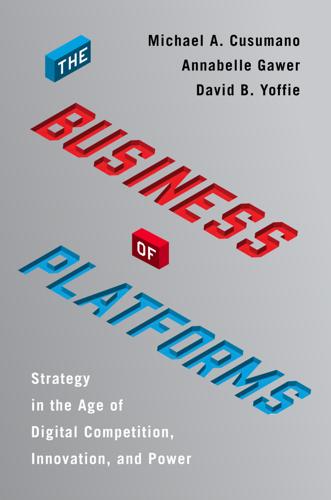
The Business of Platforms: Strategy in the Age of Digital Competition, Innovation, and Power
by
Michael A. Cusumano
,
Annabelle Gawer
and
David B. Yoffie
Published 6 May 2019
See platform failures mistiming as platform failure, 129–35 mistrust, especially in transaction platforms, 119–24 MIT Sloan Management Review, viii Moore’s law, 49 Motorola Mobility, 87 Mozilla, 125, 126 multi-homing (multiple platforms for the same purpose) overview, 25, 41–44 digital technology impact, 52–54 on quantum computers, 229 in video game arena, 44 multisided markets overview, 71 choosing your market sides, 69–71 engaging multiple sides of a market, 15–16, 41–42 future expectations, 219, 231–32 response of older industries to digital platforms, 159–60 telephone service as, 34 multisided platforms building on side to attract the other side, 75 social networks as, 71 strategy, 68, 183 National Geographic (magazine), 230–31 National Labor Relations Board, 195 negative network effects, 16–17 Netscape Navigator, 125 network effects overview, 13–14, 25, 59–60, 249n18, 249n19 Alibaba’s, 124 barriers to entry created by, 48 digital technology impact, 50–52 generation of, 16–18 with instant messaging, 41–42 Metcalfe’s law dynamic, 35, 35f as positive feedback loops, 13, 16, 32, 59, 75 and quantum computing, 228 of telephone network, 32–37 of Yellow Pages, 32–33, 37–41, 253n12 See also barriers to entry; differentiation and niche competition; multi-homing network externalities, 249n18, 252n5 Network World (magazine), 125 New York City and Uber, 118 next-generation platforms, 219 niche companies, 46, 55–56 Nintendo, 43–44 Nishi, Kazuhiko “Kay,” 3 Nokia’s Symbian, 79–80, 130, 131 nonlinear increases in utility and value, 13 Numenta, 69 Oasis (home rental platform), 142 Onefinestay, 142 one-sided platforms building one side to attract other sides, 75–76 social networks as, 71 telephone service as, 34 Open Handset Alliance (Google), viii, 45–46 openness and curation tradeoff, 191 Open Platform Initiative (Lyft + automakers), 225–26 open source software, 125–26 OpenTable, 84–85 PaaS (platform-as-a-service), 163 Palm personal digital assistant (PDA) app store, 96 Pandora, 135 Parker, Geoffrey, 82–83, 111 Path, 110 patterns in platform failures, 108–12, 242t, 243t Paul, Sunil, 113, 117, 118 PC Magazine, 131, 133–34 PCWorld (magazine), 127 personal computers (PCs) as platform vs. product business, 5–6 value of platforms associated with, 21–22, 23t, 24–25, 251nn23–24 Pharmapacks, 145–47 photographers hired by Airbnb, 75 PHV (private hire vehicle) operators in London, 148–50 physical platforms, 12 Pivotal Cloud Foundry, 162–63 platform-as-a-service (PaaS), 163 platform businesses overview, 11, 12–15, 49, 248n14 accepting their roles in modern society, 213 build vs. buy decision, 169–71 centralization of power, 235 core principles overview, 214–17, 215t decisions that drive network effects, 33 durability of, 213–14 enabling “asset-light” business models, 60, 192 generating revenue without a product or service, 17 hybrids as next phase in evolution of, 103–4 and industrial Internet of things, 161–62 next-generation platforms, 219 platform vs. product in a platform market, 5–6, 14 specialized retail platforms, 55 start-up costs, 57 successful techniques, 60 traditional rules related to, 11–12 See also network effects platform failures (common mistakes), 105–38 overview, 26–27, 107–8, 135–38 hubris, 124–29, 137–38 learning from mistakes, 136 mispricing on one side of the platform, 112–19 mistiming, 129–35 mistrust, especially in transaction platforms, 119–24 and network effects, 136–37 overly complicated platform fails to scale, 67–68 patterns in, 108–12, 242t, 243t platform governance, 173–209 overview, 27–28 anticipating antitrust and competition concerns, 180–85 balancing openness with trust, 185–91 mood change in business environment, 176–80 power and platforms, 175–76 responsibility and liability for activities on the platform, 178–79 self-regulating, 199–206 threats from megaplatforms, 177–80 workforce issues, 192–99 See also governments and regulations platform leaders, neutrality of, vii–viii Platform Leadership: How Intel, Microsoft, and Cisco Drive Industry Innovation (Cusumano, Gawer, and Yoffie), vii–viii, 10–11 platform market drivers, 29–62 overview, 25, 31–32, 49–50, 59–61 See also barriers to entry; differentiation and niche competition; multi-homing; multisided markets; network effects platform potential and future scenarios, 217–37 overview, 28, 217–20 CRISPR, 229–34 quantum computing, 226–29 voice recognition, 220–23 Platform Revolution (Parker, Van Alstyne, and Choudary), 82–83 platforms, four steps to building, 66–93 overview, 66–67, 67f choose your market sides, 67–71 design your business model, 77–85 establish and enforce ecosystem rules, 85–93 solve the “chicken-or-egg” problem, 71–77 platform thinking, 4, 5–6 Porter, Michael E., 42 positive feedback loops, 13, 16, 32, 59, 75.
…
The Google Android example highlighted how a dominant innovation platform could be vulnerable to antitrust complaints even if it was free (unlike Microsoft Windows). We discussed in earlier chapters how Google licensed the Android mobile operating system for no charge to manufacturers of smartphones and tablets but made money from selling advertisements that came through its search engine. There is nothing illegal about this multisided platform strategy. However, the European Commission alleged in 2016 that Google imposed conditions on mobile phone manufacturers and mobile phone operators aimed at protecting Google’s search engine monopoly.13 The Commission complaint stated that Google breached EU antitrust rules in three areas: (1) requiring manufacturers to preinstall Google Search and Google’s Chrome browser and requiring them to set Google Search as the default search service on their devices as a condition to license certain Google proprietary apps; (2) preventing manufacturers from selling smart mobile devices running on competing operating systems based on the Android open source code; and (3) giving financial incentives to manufacturers and mobile network operators on the condition that they exclusively preinstall Google Search on their devices.
…
Cusumano, “The Evolution of Platform Thinking,” Communications of the ACM 53, no. 1 (January 2010): 32–34. 15.Geoffrey Parker, Marshall Van Alstyne, and Sangeet Paul Choudary, Platform Revolution: How Platform Markets Are Transforming the Economy and How to Make Them Work for You (New York: W. W. Norton, 2016). 16.David S. Evans and Richard Schmalensee, Matchmakers: The New Economics of Multisided Platforms (Boston: Harvard Business Review Press, 2016). 17.Annabelle Gawer and Michael A. Cusumano, “How Companies Become Platform Leaders,” MIT Sloan Management Review 49, no. 2 (Winter 2008): 28–35; and Cusumano, Staying Power, 64. 18.Network effects are sometimes called “network externalities” (in truth, they are slightly different) or “demand-side economies of scale,” although it can be difficult to determine which is the demand side.
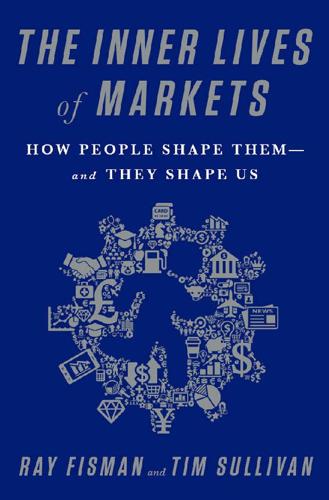
The Inner Lives of Markets: How People Shape Them—And They Shape Us
by
Tim Sullivan
Published 6 Jun 2016
D., 22 Liu, Qihong, 128–129 Lyft car service, 173 MAD (doctrine of nuclear deterrence by mutually assured destruction), 26 mail-in-bids, for auctions, 83–84 “The Market for Lemons” (Akerlof), 44–51, 64 market frictions, 169–174 market fundamentalists, 16–17 market insights, 14–15 market makers, 107–110, 118–121 markets 18th-century book, 90–91 competitive, 35, 124–126, 172–174, 180–181 design, 133, 137–142 dysfunction of, 36, 75–77, 143 economics of platform, 107–112 equilibrium, 33 fixed-price versus auctions, 96–97 food bank system, 154–160 image problem of, 152–153 labor, 48, 64–66 lemon, 44–51, 58–59, 64, 112 multisided, 108–112, 118–124 one-sided, 108–112 in POW camps, 4, 7–13, 175–177 rules for platform, 112–117 school choice in Sweden, 151–152 selfishness in, 177–179 technology and, 169–173 trade with uninformed parties, 166–169 transformation of, 13–17 two-sided, 108–112, 118–124 See also auctions; economics; platforms Marx, Karl, 20, 23 matching problems middle school dance partners, 131–132, 134, 137–140 student to school, 138–139, 141–142, 143–149 mathematics algebraic topology, 44–45 economic theory transformed by, 15, 19–27 game theory, 136 general equilibrium model, 29, 31–34, 36–37, 40, 45, 76 kidney exchange algorithm, 163–165 models, 20, 24–25, 30 in real world economics, 35–37 Samuelson connecting economics and, 28–29 Shapley-Gale algorithm, 137–140 Matsuzaka, Daisuke, 79–81, 87–89 Maxwell, James Clark, 24 McManus, Brian, 73–75 mechanism design, 133, 134 medical residency programs, 140 merchant from Prato, 105–107 middle school dance-matching, 131–132, 134, 137–140 Milgrom, Paul, 70–71, 98, 102–103 mobile market platform, 116 modeling applied theory, 45, 50, 75–76 competition, 35, 166, 172–173 congestion pricing, 86, 94 dysfunction of, 75–77 economic, 15, 24–29 mathematical, 20, 24–25, 30 reality-based economic, 35–37, 45, 49–51, 141 models auction, 82–84 eBay, 43, 46, 48 general equilibrium, 31–34, 36–37, 40, 76 lemons, 44–51, 58–59, 64, 112 Solow, 35 See also platforms; signaling model Moldovanu, Benny, 90–91 money burning costs, 70–71 money-back guarantees, 69–71 Morals & Markets: The Development of Life Insurance in the United States (Zelizer), 153 Morgenstern, Oskar, 25–27 mortality rates, of Japanese vs German POW camps, 10–13 MS-13 gang, 67 multisided markets, 108–112, 118–124 multisided platform, 14 multiunit Vickrey auction, 93 Murphy, Frank, 9 Nasar, Sylvia, 29 Nash, John, 32 National Archives’ World War II Prisoners of War Data File, 11 network externalities, 121–124 New England Program for Kidney Exchange, 164–165 New York Department of Education, 143–144, 145, 149 Nobel Prize in Economics, 34 See also Sveriges Riksbank Prize in Economic Sciences in Memory of Alfred Nobel noncustomers, paying, 123–124 Nordstrom’s return policy, 69–70 no-risk money-back guarantees, 69–71 normal good, 180 no-trade rule, Japanese POW camps, 10–13 nuclear deterrence, 26 Omidyar, Pierre, 39–40 one-sided markets, 108–112 online retail, 41–43, 52–55 optimized efficiency, 85–86, 133 organ sales, 160–161 organizations, sick, 142–143 out-of-town bids, for auctions, 83–84 Pareto, Vilfredo, 20, 21–22 Pareto efficiency, 22 Penny Black stamp, 82–84 Percy P.
…
At the same time, these principles are getting applied in ever-broader, more novel, and more sophisticated contexts. Ever wonder where the ads come from when you perform a Google search? They appear based on principles of auction design that didn’t exist in 1945. And that smart phone in your pocket? It’s both a technological and market innovation, what economists call a multisided platform. You acquire apps—sometimes paying for them but not always—created by developers on the other side of the trade. The free apps survive by delivering messages from advertisers who sit on yet another side of the phone-as-platform. And finally the phone itself is essentially another piece of the phone “ecosystem” built around the operating system—Android or iOS or Windows—that ultimately directs traffic in this many-sided set of relationships.
…
And the curious story of the merchant of Prato, his delinquent customer, and the count’s response illustrates some of the principles that make a market platform tick. As economists have focused their modeling efforts ever more on real world phenomena, leading researchers have turned their attention to platforms, bringing some much-needed clarity to the rules that dictate how these multisided markets work. As a result, we now have a deeper understanding of what makes a platform work and a set of guiding principles—many of which can be traced back to twelfth-century innovations in market design—that can help us build them better. Since platforms now encompass such significant parts of our lives, it’s important to understand the trade-offs that come with participating in them.

Virtual Competition
by
Ariel Ezrachi
and
Maurice E. Stucke
Published 30 Nov 2016
To explain how, we first explain the operation of network effects. Then we illustrate the way in which market power could distort competition and search results online. Network Effects To understand how online platforms can exercise market power, we briefly outline several network effects involving online multisided platforms (such as Google, Bing, price comparison websites, and Facebook).5 Traditional Network Effects. Traditional network effects are observable in social network platforms, where bigger is better. Direct network effects arise when a consumer’s utility from a product increases as others use the product.6 One example is Facebook.
…
These gatekeepers control many significant access points and, as a result, have the power to distort competition, sometimes unintentionally. So, comparison intermediaries could sometimes, under certain conditions, pave the way for higher prices, lower quality, and a reduction in consumer welfare. In what follows, we illustrate how platforms may sometimes fail to deliver on their competitive promise. Possible Distortions When a multisided platform offers a product or ser vice for free, the primary dimension of competition is typically quality. Competition is therefore likely to stimulate investment in quality, such as more relevant search results. Yet, the platform operator has competing incentives. It invests in quality on the free side to attract users.
…
So many shoppers visited Wal-Mart’s website when the door-busters went on sale early Thursday, that the site was overloaded and checkouts were snarled.”73 As online markets cover an ever-increasing spectrum of commercial activities, another noteworthy trend is how Big Data and Big Analytics can offer firms “even greater opportunities for competitive advantage (online businesses have always known that they were competing on how well they understood their data).”74 The business literature highlights the following ways in which Big Data and Big Analytics can transform industries: • • • Companies are increasingly adopting business models that rely on personal data as a key input. Data-driven business models, for example, involve multisided markets; companies offer individuals free ser vices with the aim of acquiring valuable personal data to assist advertisers to better target them with behavioral advertising.75 The four Vs of Big Data—volume, velocity, variety, and value—will increase, as companies undertake data-driven strategies to obtain and sustain a competitive advantage.

The Inevitable: Understanding the 12 Technological Forces That Will Shape Our Future
by
Kevin Kelly
Published 6 Jun 2016
This ecosystem of interdependent species keeps expanding, and will keep expanding as long as Facebook can manage its rules and its own growth as a firm. The wealthiest and most disruptive organizations today are almost all multisided platforms—Apple, Microsoft, Google, and Facebook. All these giants employ third-party vendors to increase the value of their platform. All employ APIs extensively that facilitate and encourage others to play with it. Uber, Alibaba, Airbnb, PayPal, Square, WeChat, Android are the newer wildly successful multiside markets, run by a firm, that enable robust ecosystems of derivative yet interdependent products and services. Ecosystems are governed by coevolution, which is a type of biological codependence, a mixture of competition and cooperation.
…
A couple of maverick startups in 2016 are trying to disrupt the current attention system, but it may take a number of tries before some of the radical new modes stick. The missing piece between this fantasy and reality is the technology to track the visits, to weed out fraud, and quantify the attention that a replicating ad gets, and then to exchange this data securely in order to make a correct payment. This is a computational job for a large multisided platform such as Google or Facebook. It would require a lot of regulation because the money would attract fraudsters and creative spammers. But once the system was up and running, advertisers would release ads to virally zip around the web. You catch one and embed it in a site. It then triggers a payment if a reader clicks on it.
…
Since Apple kept adding ingenious new ways to interact with the phone, including new sensors such as a camera, GPS, and an accelerometer, thousands of novel species of innovations deepened the iPhone ecology. A third generation of platforms further expanded the power of the marketplaces. Unlike traditional two-sided markets—say, a farmers’ market that enables buyers and sellers—a platform ecosystem became a multisided market. A good example of this is Facebook. The firm created some rules and protocols that formed a marketplace where independent sellers (college students) produced their own profiles, which were matched up in a marketplace with their friends. The attention of the students was sold to advertisers.
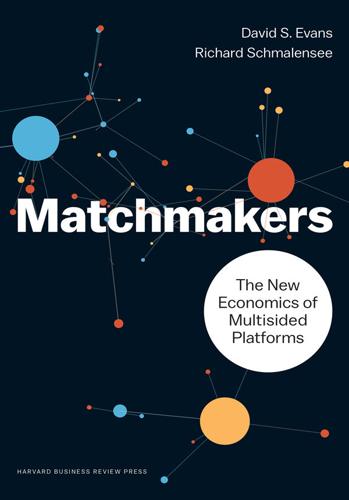
Matchmakers: The New Economics of Multisided Platforms
by
David S. Evans
and
Richard Schmalensee
Published 23 May 2016
Now we call these businesses multisided platforms.2 Don’t let the economists’ unsexy name fool you.3 Multisided platforms are anything but boring. Some even facilitate mating. Multisided platforms can create great value for society and fortunes for their entrepreneurs and investors. Three of the five most valuable companies in the world in 2015—Apple, Google, and Microsoft—use this business model.4 So do seven of the ten start-ups with the highest market values—including Uber and Airbnb.5 Let’s get one thing clear, though, before you invest more time in learning about multisided platforms from us. This isn’t a gee-whiz “use the [fill in the buzzword] strategy and you’ll make a billion, impress your boyfriend or your mom, and retire by the age of thirty-five” book.
…
The core of this book in part II uses case studies of multisided platforms to provide a deeper understanding of the concepts that we’ve presented in this chapter. We focus on six critical issues that multisided platforms must address. The opportunity for a multisided platform ordinarily arises when frictions keep market participants from dealing with each other easily and directly. Entrepreneurs can identify opportunities for starting a matchmaker by looking for significant transaction costs that keep willing buyers and sellers apart and that a well-designed matchmaker can reduce. Multisided platforms have to secure critical mass in order to ignite.
…
Part I (chapters 1–3) presents an overview of the new economics of multisided platforms and shows how this business model with ancient roots has been turbocharged by modern technologies. Part II (chapters 4–10) provides a deep dive into key concepts that matchmakers must deal with in building, igniting, and operating their businesses. Finally, part III (chapters 11–13) describes how turbocharged, multisided platforms are creating new industries, destroying old ones, and forcing existing businesses to reinvent themselves to survive. A glossary at the back of the book provides definitions for the key concepts surrounding multisided platforms. To understand the perils and promise of multisided platforms we begin by describing the arduous journey, and near-death experiences, of a matchmaker we often use.

Cogs and Monsters: What Economics Is, and What It Should Be
by
Diane Coyle
Published 11 Oct 2021
Epstein, Joshua M., 2007, Generative Social Science Studies in Agent-Based Computational Modeling, Princeton, NJ: Princeton University Press. European Commission, Beyond GDP, http://ec.europa.eu/environment/beyond_gdp/index_en.html. Evans, David S., and Richard Schmalensee, 2016a, Matchmakers: The New Economics of Multisided Platforms, Boston, MA: Harvard Business School Press. Evans, David S., and Richard Schmalensee , 2016b, ‘The New Economics of Multi-Sided Platforms: A Guide to the Vocabulary (9 June), SSRN, https://ssrn.com/abstract=2793021 or http://dx.doi.org/10.2139/ssrn.2793021. Fanelli, D., 2010, ‘Do Pressures to Publish Increase Scientists’ Bias?
…
‘Indirect’ refers to the fact that many digital markets are matching suppliers to consumers, so if for example, you want to hire an AirBnB apartment, the more people supplying the AirBnB apartments the better it is for you. And if you are a supplier who wants to rent out your apartment, the more consumers on the platform the better it is for you. Digital platforms of this kind are also known as two-sided or multisided markets (Evans and Schmalensee 2016a). These indirect network effects are also mutually reinforcing and encouraging of scale. All ‘sides’ of the platform can—at least potentially—benefit the more users there are on the platform. There are many examples, from familiar consumer-facing ones like AirBnB, Amazon Marketplace, eBay, OpenTable, or Uber to business-to-business ones in industries such as chemicals or steel.

Platform Revolution: How Networked Markets Are Transforming the Economy--And How to Make Them Work for You
by
Sangeet Paul Choudary
,
Marshall W. van Alstyne
and
Geoffrey G. Parker
Published 27 Mar 2016
Because these value-creating networks grow faster outside the firm than inside, ruling the ecosystem wisely puts a premium on not ruling it selfishly. If navigating the rules for governance is hard for one-sided platforms like the Keurig brewing system, it’s exponentially harder when platforms are multisided. After all, multisided platforms involve numerous interests that don’t always align. This makes it difficult for platform managers to ensure that various participants create value for one another, and it makes it likely that conflicts will emerge that governance rules must resolve as fairly and efficiently as possible. This is a juggling act that even giants and geniuses often get wrong.
…
Market designer and Nobel Prize-winning economist Alvin Roth described a model of governance that uses four broad levers to address market failures.19 According to Roth, a well-designed market increases the safety of the market via transparency, quality, or insurance, thereby enabling good interactions to occur. It provides thickness, which enables participants from different sides of a multisided market to find one another more easily. It minimizes congestion, which hampers successful searches when too many people participate or low quality drives out high. And it minimizes repugnant activity—which explains why platform designers forbid porn on iTunes, human organ sales on Alibaba, and child labor on Upwork.
…
Lyft,” Wall Street Journal, August 11, 2014; C. Newton, “This is Uber’s Playbook for Sabotaging Lyft,” The Verge, August 26, 2014, http://www.theverge .com/2014/8/26/6067663/this-is-ubers-playbook-for-sabotaging-lyft. CHAPTER 11: POLICY 1. Kevin Boudreau and Andrei Hagiu, Platform Rules: Multi-Sided Platforms as Regulators (Cheltenham, UK: Edward Elgar, 2009), 163–89. 2. Malhotra and Van Alstyne, “The Dark Side of the Sharing Economy.” 3. Felix Gillette and Sheelah Kolhatkar, “Airbnb’s Battle for New York,” Businessweek, June 19, 2014, http://www.bloomberg .com/bw/articles/2014-06-19/airbnb-in-new-york-sharing-startup-fights-for-largest-market. 4.

Machine, Platform, Crowd: Harnessing Our Digital Future
by
Andrew McAfee
and
Erik Brynjolfsson
Published 26 Jun 2017
They have a variety of other levers to manage, including the user interface and user experience, reputation systems, marketing budgets, and core network technology. The most successful platform owners carefully curate the value that each side of the market gets from participating and aren’t too greedy. Once you understand the logic of two-sided markets, the next step is to apply it to multisided markets. Two-sided markets often become multisided markets with dozens or even thousands of distinct subgroups interacting through the platform. For instance, iTunes is a great way to get music on an iPhone. The more artists who put their music on iTunes, the more attractive it is to buy an iPhone. That’s a nice two-sided network.
…
Louis, 163 fees Stripe, 172–73 in two-sided networks, 215 fiat currencies, 280, 286, 305 FICO scores, 46–47 file sharing platforms, 144–45 film photography, 131 financial crisis (2008), 285, 308 financial services automated investing, 266–70 crowdlending platforms, 263 as least-trusted industry, 296 and regulation, 202 TØ.com, 290 virtualization of, 91 find-fix-verify, 260 firms economics of, 309–12 theory of, See TCE (transaction cost economics) FirstBuild, 11–14 Fitbit, 163 5G wireless technology, 96 fixed costs, 137 flat hierarchy, 325 Fleiss, Jennifer, 187 Flexe, 188 focus groups, 189–90 “food computers,” 272 food preparation recipes invented by Watson, 118 robotics in, 93–94 Forbes magazine, 303 forks, operating system, 244 Forsyth, Mark, 70 “foxes,” 60–61 fraud detection, 173 “free, perfect, instant” information goods complements, 160–63 economics of, 135–37 free goods, complements and, 159 freelance workers, 189 free market, See market “freemium” businesses, 162 Friedman, Thomas, 135 Friendster, 170 Fukoku Mutual Life, 83 Gallus, Jana, 249n garments, 186–88 Garvin, David, 62 Gazzaniga, Michael, 45n GE Appliances, 15 Gebbia, Joe, 209–10 geeky leadership, 244–45, 248–49 gene editing, 257–58 General Electric (GE), 10–15, 261 General Growth Properties, 134 General Theory of Employment, Interest, and Money, The (Keynes), 278–79 generative design, 112–13 genome sequencing, 252–55, 260–61 Georgia, Republic of, 291 Gershenfeld, Neil, 308 GFDL, 248 Gill, Vince, 12n Giuliano, Laura, 40 global financial crisis (2008), 285, 308 GNU General Public License (GPL), 243 Go (game), 1–6 Goethe, Johann Wolfgang von, 178 Go-Jek, 191 golden ratio, 118 Goldman Sachs, 134 gold standard, 280n Goodwin, Tom, 6–10, 14 Google, 331; See also Android acquiring innovation by acquiring companies, 265 Android purchased by, 166–67 Android’s share of Google revenue/profits, 204 autonomous car project, 17 DeepMind, 77–78 hiring decisions, 56–58 iPhone-specific search engine, 162 and Linux, 241 origins of, 233–34 and self-driving vehicles, 82 as stack, 295 Google AdSense, 139 Google DeepMind, 4, 77–78 Google News, 139–40 Google search data bias in, 51–52 incorporating into predictive models, 39 Graboyes, Robert, 274–75 Granade, Matthew, 270 Grant, Amy, 12n graphics processing units (GPUs), 75 Great Recession (2008), 285, 308 Greats (shoe designer), 290 Grid, The (website design startup), 118 Grokster, 144 Grossman, Sandy, 314 group drive, 20, 24 group exercise, See ClassPass Grove, William, 41 Grubhub, 186 Guagua Xiche, 191–92 gut instincts, 56 gyro sensor, 98 Haidt, Jonathan, 45 Hammer, Michael, 32, 34–35, 37, 59 hands, artificial, 272–75 Hannover Messe Industrial Trade Fair, 93–94 Hanson, Robin, 239 Hanyecz, Laszlo, 285–86 Hao Chushi, 192 “hard fork,” 304–5, 318 Harper, Caleb, 272 Hart, Oliver, 313–15 Hayek, Friedrich von, 151, 235–39, 279, 332 health care, 123–24 health coaches, 124, 334 health insurance claims, 83 Hearn, Mike, 305–6 heat exchangers, 111–13 “hedgehogs,” 60–61 Hefner, Cooper, 133 Hefner, Hugh, 133 hierarchies flat, 325 production costs vs. coordination costs in, 313–14 Hinton, Geoff, 73, 75–76 HiPPOs (highest-paid person’s opinions), 45, 63, 85 hiring decisions, 56–58 Hispanic students, 40 HIStory (Michael Jackson), 131 hive mind, 97 HMV (record store chain), 131, 134 Holberton School of Software Engineering, 289 “hold-up problem,” 316 Holmström, Bengt, 313, 315 Honor (home health care platform), 186 hotels limits to Airbnb’s effects on, 221–23 Priceline and, 223–24 revenue management’s origins, 182 “hot wallet,” 289n housing sales, 39 Howell, Emily (music composition software), 117 Howells, James, 287 Hughes, Chris, 133 human condition, 121, 122 human genome, 257–58 human judgment, See judgment, human Hyman, Jennifer, 187 hypertext, 33 IBM; See also Watson (IBM supercomputer) and Linux, 241 System/360 computer, 48 ice nugget machine, 11–14 idAb algorithm, 253, 254 incentives, ownership’s effect on, 316 incomplete contracting, 314–17 incremental revenue, 180–81 incumbents advantages in financial services, 202 inability to foresee effects of technological change, 21 limits to disruption by platforms, 221–24 platforms’ effect on, 137–48, 200–204 threats from platform prices, 220–21 Indiegogo, 13–14, 263, 272 industrial trusts, 22–23 information business processes and, 88–89 in economies, 235–37 O2O platforms’ handling of, 192–93 information asymmetries, 206–10 information goods bundling, 146–47 as “free, perfect, instant,” 135–37 and solutionism, 297–98 information transfer protocols, 138 infrared sensors, 99 InnoCentive, 259 innovation crowd and, 264–66 ownership’s effect on, 316 Instagram, 133, 264–66 institutional investors, 263 Intel, 241, 244 Internet as basis for new platforms, 129–49 economics of “free, perfect, instant” information goods, 135–37 evolution into World Wide Web, 33–34 in late 1990s, 129–31 as platform of platforms, 137–38 pricing plans, 136–37 intuition, See System 1/System 2 reasoning inventory, perishing, See perishing/perishable inventory investing, automated, 266–70 investment advising, 91 Iora Health, 124, 334 Iorio, Luana, 105 iOS, 164–67, 203 iPhone apps for, 151–53, 161–63 Blackberry vs., 168 curation of apps for, 165 demand curve for, 156 introduction of, 151–52 and multisided markets, 218 opening of platform to outside app builders, 163–64 user interface, 170 widespread adoption of, 18 iron mining, 100 Irving, Washington, 252 Isaac, Earl, 46 Isaacson, Walter, 152, 165 iteration, 173, 323; See also experimentation iTunes, 217–18 iTunes Store, 145, 165 Jackson, Michael, 131 Java, 204n Jelinek, Frederick, 84 Jeopardy!
…
(TV show), 17 Jeppesen, Lars Bo, 259 Jobs, Steve curation of iPhone platform, 165 Dropbox acquisition offer, 162 and iPhone apps, 151–53, 157, 163 joint-stock company, 320 journalism, See newspapers Joyce, James, 178 judges, parole granted by, 39–40 judgment, human as complement to computer power, 35 in decision-making loop, 53–56 flaws in, 37–42 and justification, 45 “superforecasters” and, 60–61 System 1/System 2 reasoning, 35–46 justification, 45 Kadakia, Payal, 178, 179, 184 Kaggle, 261 Kahneman, Daniel, 35–36, 43, 44, 56, 325 Kalanick, Travis, 200 Kapor, Mitch, 142 Katz, Michael, 141n Kaushik, Avinash, 45 Kay, Alan, 61 Kazaa, 144 Kehoe, Patrick J., 21 Keirstead, Karl, 143 kernel, 240 Keynes, John Maynard, 278–79, 287, 309–10 Khosla, Vinod, 94 Kickstarter, 262 “killer app,” 157 Kim, Pauline, 40–41 Kimberley Process, 289–90 kinases, 116–17 kitchen, automated, 94 Kiva Systems, 103 Klein, Gary, 56 knowledge access to, in second machine age, 18 markets and, 332 prediction markets and, 238 knowledge differentials, See information asymmetries Kodak, 131, 132 Kohavi, Ronny, 45, 51 Kohl’s, 62–63 Koike, Makoto, 79–80 Komatsu, 99 Koum, Jan, 140 Krawisz, Daniel, 304 Kurzweil, Ray, 308 Lakhani, Karim, 252–55, 259 landline telecommunications, 134–35 land title registry, 291 language learning styles, 67–69 Lasker, Edward, 2 Lawee, David, 166 law of one price, 156 Lea, Ed, 170 leadership, geeky, 244–45, 248–49 lead users, 265 LeCun, Yann, 73, 80, 121 ledger, See blockchain Legg, Shane, 71 Lehman, Bastian, 184 Lei Jun, 203 Leimkuhler, John F., 182 “lemons,” 207 Lending Club, 263 level 5 autonomy, 82 leveraging of assets, O2O platforms for, 196–97 Levinovitz, Alan, 3 Levinson, Art, 152 libraries, 229–32 Library of Congress, 231 links, 233 Linq, 290–91 Linux, 240–45, 248, 249, 260 liquidity and network effects, 206 O2O platforms as engines of, 192–96 Livermore, Shaw, 22–23 locking in users, 217 lodging; See also Airbnb differences between Airbnb and hotels, 222–23 Priceline and, 223–24 “Logic Theorist” program, 69 Long, Tim, 204 Los Angeles, California hotel occupancy rates, 221–22 Postmates in, 185 Uber’s effect on taxi service, 201 LTE networks, 96 Luca, Michael, 209n Lyft, 186, 201, 208, 218 Ma, Jack, 7 machine age, See second machine age machine intelligence mind as counterpart to, 15 superiority to System 1 reasoning, 38–41 machine learning, 66–86; See also artificial intelligence AlphaGo and, 73 back-office work and, 82–83 early attempts, 67–74 in Obama’s 2012 presidential campaign, 48–51 O2O business data and, 194 statistical pattern recognition and, 72–74 machine(s); See also artificial intelligence; robotics; standard partnership and business process reengineering, 32–33 and creativity, 110–19 defined, 14 human connection in digitized world, 122–24 human judgment and, 34–45 new mind-machine partnership, 46–62 and uniquely human domains, 110–26 Mad Men (TV drama), 48 Madrigal, Alexis, 295–96 magazines ad revenue (late 1990s), 130 ad revenue (2013), 132–33 new content platforms’ effect on revenue, 139 MakerBot, 273 maker movement, 271–72 Makhijani, Vish, 324–25 malls, 131, 134 Malone, Tom, 311, 313 management/managers continued importance of, 320–23 and economics of the firm, 309 as portion of US workforce, 321 in post-standard partnership world, 323–26 manufacturing electricity’s effect on, 19–24 robotics in, 102 transition from molds to 3D printing, 104–7 Manyika, James, 332 Manzi, Jim, 62–63 Marchant, Jo, 66n Marcus, Gary, 5, 71 marginal costs bundling and, 147 of computer storage, 136 of digital copies, 136, 137 of perishing inventory, 180, 181 of platforms, 137 of platforms vs. products, 147, 220 and Uber’s market value, 219 marginal utility, 258–59 “Market for ‘Lemons,’ The” (Akerlof), 207 market research, 13–14, 261–63 market(s) centrally planned economies vs., 235–37 companies and, 309–11 costs inherent in, 310–11 as crowd, 235–39 information asymmetries and, 206–7 prediction markets, 237–39 production costs vs. coordination costs, 313–14 Markowitz, Henry, 268 Marshall, Matt, 62 Martin, Andrew, 40–41 Marx, Karl, 279 Masaka, Makoto, 79–80 “Mastering the Game of Go with Deep Neural Networks and Tree Search” (Nature article), 4 Maugham, Somerset, 110 Mazzella, Frédéric, 190 McCarthy, John, 67 McClatchy Company, 132 McDonald’s, 92 McElheren, Kristina, 42 McKinsey Global Institute, 332 Mechanical Turk, 260 Medallion Fund, 267 medical devices crowd-designed, 272–75 3D printing and, 106 medical diagnosis, 123–24 Meehl, Paul, 41–42, 53–54, 56, 81 MegaBLAST, 253, 254 Menger, Carl, 25 Men’s Fitness, 132 Merton, Robert K., 189 Metallica, 144 Microsoft core capabilities, 15 machine learning, 79 proprietary software, 240 as stack, 295 Windows Phone platform, 167–68 Microsoft Research, 84 Milgrom, Paul, 315n milking systems, 101 Mims, Christopher, 325 mind, human as counterpart to machine intelligence, 15 undetected biases in, 42–45 Minsky, Marvin, 73, 113 Mitchell, Alan, 11, 12 MIT Media Lab, 272 mobile telephones, 129–30, 134–35 Mocan, Naci, 40 molds, 104–5 Moley Robotics, 94 Momentum Machines, 94 Moody’s, 134 Moore, John, 315 Moore’s law, 308 and Cambrian Explosion of robotics, 97–98 defined, 35 neural networks and, 75 System 2 reasoning and, 46 and 3D printing, 107 Morozov, Evgeny, 297 Mt. Gox, 286, 289n multihoming, 168 multisided markets, 217–18 multiunit enterprises (MUEs), 62–63 musical composition, 117 music industry, See recorded music industry “Music Is Satisfied with Mr. Bertram’s Mind, The” (AI-generated prose), 121 MySpace, 170–71 Naam, Ramez, 258n Nakamoto, Satoshi, 279–85, 287, 296–97, 306, 312 Nakamoto Institute, 304 Nappez, Francis, 190 Napster, 144–45 NASA, 15 Nasdaq, 290–91 National Association of Realtors, 39 National Enquirer, 132 National Institutes of Health, 253 National Library of Australia, 274 Naturalis Historia (Pliny the Elder), 246 natural language processing, 83–84 “Nature of the Firm, The” (Coase), 309–10 Navy, US, 72 negative prices, 216 Nelson, Ted, 33 Nelson, Theodore, 229 Nesbitt, Richard, 45 Netflix, 187 Netscape Navigator, 34 network effects, 140–42 defined, 140 diffusion of platforms and, 205–6 O2O platforms and, 193 size of network and, 217 Stripe and, 174 Uber’s market value and, 219 networks, Cambrian Explosion and, 96 neural networks, 73–74, 78 neurons, 72–73 Newell, Allen, 69 Newmark, Craig, 138 New Republic, 133 news aggregators, 139–40 News Corp, 170, 171 newspapers ad revenue, 130, 132, 139 publishing articles directly on Facebook, 165 Newsweek, 133 New York City Postmates in, 185 taxi medallion prices before and after Uber, 201 UberPool in, 9 New York Times, 73, 130, 152 Ng, Andrew, 75, 96, 121, 186 Nielsen BookScan, 293, 294 99Degrees Custom, 333–34 99designs, 261 Nixon, Richard, 280n Nokia, 167–68, 203 noncredentialism, 241–42 Norman, Robert, 273–74 nugget ice, 11–14 Nuomi, 192 Nupedia, 246–48 Obama, Barack, election of 2012, 48–51 occupancy rates, 221–22 oDesk, 188 Office of Personnel Management, US, 32 oil rigs, 100 on-demand economy, future of companies in, 320 online discussion groups, 229–30 online payment services, 171–74 online reviews, 208–10 O2O (online to offline) platforms, 185–98 business-to-business, 188–90 consumer-oriented, 186–88 defined, 186 as engines of liquidity, 192–96 globalization of, 190–92 interdisciplinary insights from data compiled by, 194 for leveraging assets, 196–97 and machine learning, 194 Opal (ice maker), 13–14 Open Agriculture Initiative, 272 openness (crowd collaboration principle), 241 open platforms curation and, 165 downsides, 164 importance of, 163–65 as key to success, 169 open-source software; See also Linux Android as, 166–67 development by crowd, 240–45 operating systems, crowd-developed, 240–45 Oracle, 204 O’Reilly, Tim, 242 organizational dysfunction, 257 Oruna, 291 Osindero, Simon, 76 Osterman, Paul, 322 Ostrom, Elinor, 313 outcomes, clear (crowd collaboration principle), 243 outsiders in automated investing, 270 experts vs., 252–75 overall evaluation criterion, 51 Overstock.com, 290 Owen, Ivan, 273, 274 Owen, Jennifer, 274n ownership, contracts and, 314–15 Page, Larry, 233 PageRank, 233 Pahlka, Jennifer, 163 Painting Fool, The, 117 Papa John’s Pizza, 286 Papert, Seymour, 73 “Paperwork Mine,” 32 Paris, France, terrorist attack (2015), 55 Parker, Geoffrey, 148 parole, 39–40 Parse.ly, 10 Paulos, John Allen, 233 payments platforms, 171–74 peer reviews, 208–10 peer-to-peer lending, 263 peer-to-peer platforms, 144–45, 298 Peloton, 177n Penthouse magazine, 132 People Express, 181n, 182 Perceptron, 72–74 Perceptrons: An Introduction to Computational Geometry (Minsky and Papert), 73 perishing/perishable inventory and O2O platforms, 186 and revenue management, 181–84 risks in managing, 180–81 personal drones, 98 perspectives, differing, 258–59 persuasion, 322 per-transaction fees, 172–73 Pew Research Center, 18 p53 protein, 116–17 photography, 131 physical environments, experimentation in development of, 62–63 Pindyck, Robert, 196n Pinker, Steven, 68n piracy, of recorded music, 144–45 Plaice, Sean, 184 plastics, transition from molds to 3D printing, 104–7 Platform Revolution (Parker, Van Alstyne, and Choudary), 148 platforms; See also specific platforms business advantages of, 205–11 characteristics of successful, 168–74 competition between, 166–68 and complements, 151–68 connecting online and offline experience, 177–98; See also O2O (online to offline) platforms consumer loyalty and, 210–11 defined, 14, 137 diffusion of, 205 economics of “free, perfect, instant” information goods, 135–37 effect on incumbents, 137–48, 200–204 elasticity of demand, 216–18 future of companies based on, 319–20 importance of being open, 163–65; See also open platforms and information asymmetries, 206–10 limits to disruption of incumbents, 221–24 multisided markets, 217–18 music industry disruption, 143–48 network effect, 140–42 for nondigital goods/services, 178–85; See also O2O (online to offline) platforms and perishing inventory, 180–81 preference for lower prices by, 211–21 pricing elasticities, 212–13 product as counterpart to, 15 and product maker prices, 220–21 proliferation of, 142–48 replacement of assets with, 6–10 for revenue management, 181–84 supply/demand curves and, 153–57 and unbundling, 145–48 user experience as strategic element, 169–74 Playboy magazine, 133 Pliny the Elder, 246 Polanyi, Michael, 3 Polanyi’s Paradox and AlphaGo, 4 defined, 3 and difficulty of comparing human judgment to mathematical models, 42 and failure of symbolic machine learning, 71–72 and machine language, 82 and problems with centrally planned economies, 236 and System 1/System 2 relationship, 45 Postmates, 173, 184–85, 205 Postmates Plus Unlimited, 185 Postrel, Virginia, 90 Pratt, Gil, 94–95, 97, 103–4 prediction data-driven, 59–60 experimentation and, 61–63 statistical vs. clinical, 41 “superforecasters” and, 60–61 prediction markets, 237–39 premium brands, 210–11 presidential elections, 48–51 Priceline, 61–62, 223–24 price/pricing data-driven, 47; See also revenue management demand curves and, 154 elasticities, 212–13 loss of traditional companies’ power over, 210–11 in market economies, 237 and prediction markets, 238–39 product makers and platform prices, 220 supply curves and, 154–56 in two-sided networks, 213–16 Principia Mathematica (Whitehead and Russell), 69 print media, ad revenue and, 130, 132, 139 production costs, markets vs. companies, 313–14 productivity, 16 products as counterpart to platforms, 15 loss of profits to platform providers, 202–4 pairing free apps with, 163 platforms’ effect on, 200–225 threats from platform prices, 220–21 profitability Apple, 204 excessive use of revenue management and, 184 programming, origins of, 66–67 Project Dreamcatcher, 114 Project Xanadu, 33 proof of work, 282, 284, 286–87 prose, AI-generated, 121 Proserpio, Davide, 223 Prosper, 263 protein p53, 116–17 public service, 162–63 Pullman, David, 131 Pullum, Geoffrey, 84 quantitative investing firms (quants), 266–70 Quantopian, 267–70 Quinn, Kevin, 40–41 race cars, automated design for, 114–16 racism, 40, 51–52, 209–10 radio stations as complements to recorded music, 148 in late 1990s, 130 revenue declines (2000–2010), 135 Ramos, Ismael, 12 Raspbian, 244 rationalization, 45 Raymond, Eric, 259 real-options pricing, 196 reasoning, See System 1/System 2 reasoning rebundling, 146–47 recommendations, e-commerce, 47 recorded music industry in late 1990s, 130–31 declining sales (1999-2015), 134, 143 disruption by platforms, 143–48 Recording Industry Association of America (RIAA), 144 redlining, 46–47 Redmond, Michael, 2 reengineering, business process, 32–35 Reengineering the Corporation (Hammer and Champy), 32, 34–35, 37 regulation financial services, 202 Uber, 201–2, 208 Reichman, Shachar, 39 reinforcement learning, 77, 80 Renaissance Technologies, 266, 267 Rent the Runway, 186–88 Replicator 2 (3D printer), 273 reputational systems, 209–10 research and development (R&D), crowd-assisted, 11 Research in Motion (RIM), 168 residual rights of control, 315–18 “Resolution of the Bitcoin Experiment, The” (Hearn), 306 resource utilization rate, 196–97 restaurants, robotics in, 87–89, 93–94 retail; See also e-commerce MUEs and, 62–63 Stripe and, 171–74 retail warehouses, robotics in, 102–3 Rethinking the MBA: Business Education at a Crossroads (Datar, Garvin, and Cullen), 37 revenue, defined, 212 revenue management defined, 47 downsides of, 184–85 O2O platforms and, 193 platforms for, 181–84 platform user experience and, 211 problems with, 183–84 Rent the Runway and, 187 revenue-maximizing price, 212–13 revenue opportunities, as benefit of open platforms, 164 revenue sharing, Spotify, 147 reviews, online, 208–10 Ricardo, David, 279 ride services, See BlaBlaCar; Lyft; Uber ride-sharing, 196–97, 201 Rio Tinto, 100 Robohand, 274 robotics, 87–108 conditions for rapid expansion of, 94–98 DANCE elements, 95–98 for dull, dirty, dangerous, dear work, 99–101 future developments, 104–7 humans and, 101–4 in restaurant industry, 87–89 3D printing, 105–7 Rocky Mountain News, 132 Romney, Mitt, 48, 49 Roosevelt, Teddy, 23 Rosenblatt, Frank, 72, 73 Rovio, 159n Roy, Deb, 122 Rubin, Andy, 166 Ruger, Ted, 40–41 rule-based artificial intelligence, 69–72, 81, 84 Russell, Bertrand, 69 Sagalyn, Raphael, 293n Saloner, Garth, 141n Samsung and Android, 166 and Linux, 241, 244 sales and earnings deterioration, 203–4 San Francisco, California Airbnb in, 9 Craigslist in, 138 Eatsa in, 87 Napster case, 144 Postmates in, 185 Uber in, 201 Sanger, Larry, 246–48 Sato, Kaz, 80 Satoshi Nakamoto Institute, 304 scaling, cloud and, 195–96 Schiller, Phil, 152 Schumpeter, Joseph, 129, 264, 279, 330 Scott, Brian, 101–2 second machine age origins of, 16 phase one, 16 phase two, 17–18 secular trends, 93 security lanes, automated, 89 Sedol, Lee, 5–6 self-checkout kiosks, 90 self-driving automobiles, 17, 81–82 self-justification, 45 self-organization, 244 self-selection, 91–92 self-service, at McDonald’s, 92 self-teaching machines, 17 Seychelles Trading Company, 291 Shanghai Tower, 118 Shapiro, Carl, 141n Shaw, David, 266 Shaw, J.
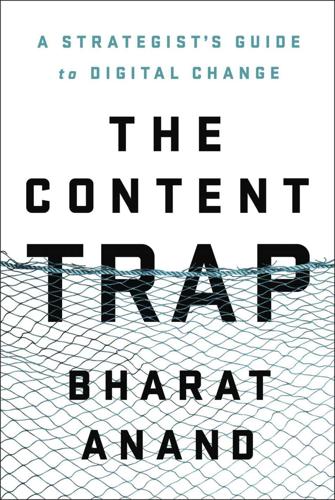
The Content Trap: A Strategist's Guide to Digital Change
by
Bharat Anand
Published 17 Oct 2016
Music, movies, radio, television programs, books, news, and advertisements are all examples of information goods—things that can be reduced to bits and bytes and transmitted digitally. So too is education—a product whose delivery remained unchanged for nearly three centuries. Until now. The same digital technologies and phenomena that impacted these other businesses are now creating cataclysms in education, too: broadband delivery, multisided platforms, apps, search, new devices, and software innovations. And in this world, just as in other content businesses, doomsday scenarios are plentiful, digital possibilities are simultaneously frightening and exhilarating, and new models, new organizations, and new investors are emerging everywhere.
…
“Informative Advertising with Differentiated Products.” The Review of Economic Studies , 51, no. 1 (1984): 63–81. Guinan, Eva C., Kevin J. Boudreau, and Karim R. Lakhani. “Experiments in Open Innovation at Harvard Medical School.” MIT Sloan Management Review 54, no. 3 (Spring 2013): 45–52. Hagiu, Andrei. “Strategic Decisions for Multisided Platforms.” MIT Sloan Management Review, Winter 2014. Hagiu, Andrei, and Simon Rothman. “Network Effects Aren’t Enough.” Harvard Business Review, April 2016. Hendricks, Ken, and Alan Sorensen. “Information and the Skewness of Music Sales.” Journal of Political Economy 117, no. 2 (April 2009): 324.
…
“product versus platform” See also Jean-Charles Rochet and Jean Tirole, “Platform Competition in Two-Sided Markets,” Journal of the European Economic Association 1, No. 4 (June 2003), 990–1039; Mark Armstrong, “Competition in Two-Sided Markets,” RAND Journal of Economics , 37, no. 3 (Autumn 2006), 668–91; Jean-Charles Rochet and Jean Tirole, “Two-Sided Markets: A Progress Report,” RAND Journal of Economics , 37, no. 3 (Autumn 2006), 645–67. in 1996 Nick Statt, “Rare Pokemon Card Attracts Record-Breaking $50k Offers on eBay,” CNET , September 5, 2013. indirect network effects Andrei Hagiu, “Strategic Decisions for Multisided Platforms,” MIT Sloan Management Review , Winter 2014; Andrei Hagiu and Simon Rothman, “Network Effects Aren’t Enough,” Harvard Business Review, April 2016; and Rita McGrath, “The Problem with Groupon’s Business Model,” Harvard Business Review , July 13, 2011. Schibsted Information about Schibsted in this section and the rest of the book draws primarily on the sources listed earlier.
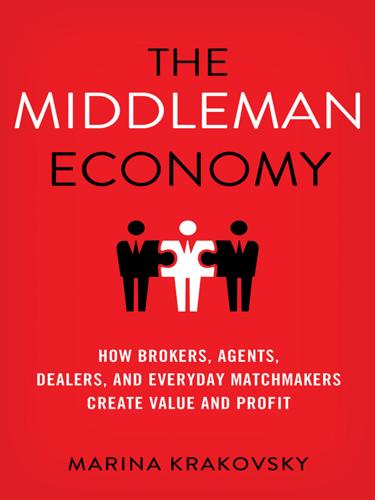
The Middleman Economy: How Brokers, Agents, Dealers, and Everyday Matchmakers Create Value and Profit
by
Marina Krakovsky
Published 14 Sep 2015
For the second quarter of 2014, the most recent period for which data is available, Talent Solutions revenue totaled $322 million while revenue from Premium Subscriptions was $105 million, and revenue from Marketing Solutions was $106 million. See “LinkedIn Announces Second Quarter 2014 Results,” LinkedIn press release, July 31, 2014, retrieved from http://investors.linked in.com/releasedetail.cfm?ReleaseID=863494). This is no accident: the company understands that it is operating in a multisided market, where offering low-price or even free entry to one side (in this case, job seekers) will attract plenty of high-paying participants on the other side (recruiters whose livelihood depends on finding the right job seekers). 8.Joe Light, “In Zillow-Trulia Deal, Making Room for Brokers,” Wall Street Journal, July 28, 2014.
…
See Dina Mayzlin, Yaniv Dover, and Judith Chevalier, “Promotional Reviews: An Empirical Investigation of Online Review Manipulation,” American Economic Review 104, no. 8: 2421–55. 17.This is a central argument of a book chapter that examines enforcement activities by middlemen as seemingly varied as the Roppongi Hills shopping center in Tokyo and the Harvard Business School. See Kevin J. Boudreau and Andrei Hagiu, “Platform Rules: Multi-Sided Platforms as Regulators,” in Annabelle Gawer (ed.), Platforms, Markets and Innovation (Northampton, MA: Edward Elgar Publishing, 2009). 18.Hongbin Cai, Ginger Zhe Jin, Chong Liu, Li-an Zhou, “Seller Reputation: From Word-of-Mouth to Centralized Feedback,” International Journal of Industrial Organization 34 (May 2014): 51–65. 19.Interview with Ginger Jin, November 20, 2013. 20.W.
…
Finally, note that Georg Simmel described another middleman, one without the sinister overtones of tertius gaudens—this is Simmel’s tertius iungens (the third who joins). 20.Ron Burt, “Structural Holes and Good Ideas,” American Journal of Sociology 110, no. 2 (September 2004): 349–399. 21.Victoria Barret, “Silicon Valley Cinderella,” Forbes, March 21, 2012. 22.Ronald Burt, Structural Holes: The Social Structure of Competition (Harvard University Press, 1992), 28. 23.Burt used the word “bridge” to refer to the relationship, whereas I am using it to refer to the person. 24.Fortune Editors, “The Real Way to Build a Social Network,” Fortune, January 24, 2012. 25.Interview with Ron Burt, February 10, 2014. 26.This research is described in Ron Burt, Neighbor Networks (New York: Oxford University Press, 2010). 27.Interview with LaJuan Stoxstill-Diggs, January 31, 2014. 28.See, for example, “Maureen Orth, “Killer@Craigslist,” Vanity Fair, October 2009. 29.Buyers of classified ads saved $5 billion between 2000 and 2007 as a result of Craigslist entering the market. See Robert Seamans and Feng Zhu, “Responses to Entry in Multi-Sided Markets: The Impact of Craigslist on Local Newspapers,” Management Science 60, no. 2 (February 2014): 476–493. 30.He is selling it online as an e-book. See LaJuan Stoxstill-Diggs, The Craigslist Hustle (LSD Publishing, 2009). 31.Interview with Jim Angel, February 3, 2014. 32.Anil K. Kashyap, Raghuram Rajan, and Jeremy C.

Modern Monopolies: What It Takes to Dominate the 21st Century Economy
by
Alex Moazed
and
Nicholas L. Johnson
Published 30 May 2016
On Facebook, users both create their profile (producer) and view their friends’ (consumer) profiles, while on Snapchat, the same user both sends (producer) and receives messages (consumer). 7. Provide Single-User Utility Last but certainly not least is providing single-user utility. This is a come-for-the-tool-stay-for-the-network approach, as venture capitalist Chris Dixon says.15 You attract one side of your multisided platform by offering that user group value even if the other side never shows up. Many platforms that went this route were initially apps that provided their users with essential functionality even if the network never materialized. Early Instagram is a great example, as it provided its users with a way to take photos and make them look good long before it evolved into a full-fledged social networking platform.
…
Steve Blank, “Steve Blank: Here’s Why the First-Mover Advantage Is Extremely Overrated,” Business Insider, October 19, 2010, http://www.businessinsider.com/steve-blank-first-mover-advantage-overrated-2010-10. 35. For more detail, see David S. Evans, “Governing Bad Behavior by Users of Multi-Sided Platforms,” Berkeley Technology Law Journal 27, no. 2 (Fall 2012). 36. Angwin, Stealing Myspace. 37. Xu Lin, “First Impressions Count,” China Daily, http://www.chinaculture.org/chineseway/2012-05/17/content_433892.htm, accessed July 2015. 38. Nancy Jo Sales, “Tinder and the Dawn of the “Dating Apocalypse,” Vanity Fair, August 31, 2015, http://www.vanityfair.com/culture/2015/08/tinder-hook-up-culture-end-of-dating. 39.
…
Title: Modern monopolies : what it takes to dominate the 21st-century economy / Alex Moazed and Nicholas L. Johnson. Description: First edition. | New York, N.Y. : St. Martin’s Press, [2016] Identifiers: LCCN 2015050147| ISBN 9781250091895 (hardcover) | ISBN 9781250091901 (e-book) Subjects: LCSH: Multi-sided platform businesses. | Technological innovations—Economic aspects. | Electronic commerce. Classification: LCC HD9999.M782 M63 2016 | DDC 338.8/2—dc23 LC record available at http://lccn.loc.gov/2015050147 e-ISBN 9781250091901 First Edition: May 2016 Our e-books may be purchased in bulk for promotional, educational, or business use.

Custodians of the Internet: Platforms, Content Moderation, and the Hidden Decisions That Shape Social Media
by
Tarleton Gillespie
Published 25 Jun 2018
Excluding porn or threats or violence or terrorism is just one way platforms constitute the social media product they are generating for the audience. The persistent belief that platforms are open, impartial, and unregulated is an odd one, considering that everything on a platform is designed and orchestrated. Economists know this: like with any “multisided market,” a platform company is a broker, profiting by bringing together sellers and buyers, producers and audiences, or those in charge of tasks and those with the necessary skills to accomplish them.69 So, if Uber profits by bringing independent drivers to interested passengers, coordinating and insuring their interaction, and taking a fee from the exchange, Twitter does much the same: it brings together independent speakers with interested listeners, coordinates their interaction, and takes a fee from the exchange—in the form of valuable user data.
…
So for the overwhelming majority of iPhone and iPad users, the App Store is the only game in town. App developers must pass through this bottleneck, and users must wait at its exit for approved apps to emerge. While this distribution system was a relatively new innovation in how users bought software, such arrangements are endemic to running a “multi-sided platform.”20 The intermediary’s economic interests depend on coordinating an exchange between two or more groups (here, app developers and iPhone users). This bottleneck allows Apple to control the financial side of this exchange as well: how prices are set, how updates are delivered, how customer feedback and reviews are received and responded to.21 Extracting rent requires some way to keep participants where rent can be extracted.22 And Apple can direct how apps are presented to users: how apps are described and categorized, how the collection can be navigated, how new or popular apps are introduced and highlighted.
…
“Pro-Anorexia Communities and Online Interaction: Bringing the Pro-Ana Body Online.” Body and Society 18 (2): 27–57. BOGOST, IAN, AND NICK MONTFORT. 2009. “Platform Studies: Frequently Questioned Answers.” Irvine, CA. https://escholarship.org/uc/item/01r0k9br.pdf. BOUDREAU, KEVIN J., AND ANDREI HAGIU. 2009. “Platform Rules: Multi-Sided Platforms as Regulators.” In Platforms, Markets and Innovation, ed. Annabelle Gawer, 163–91. Cheltenham, UK: Edward Elgar. http://papers.ssrn.com/sol3/papers.cfm?abstract_id=1269966. BOWKER, GEOFFREY, AND SUSAN LEIGH STAR. 2000. Sorting Things Out: Classification and Its Consequences. Cambridge: MIT Press.

Reinventing Capitalism in the Age of Big Data
by
Viktor Mayer-Schönberger
and
Thomas Ramge
Published 27 Feb 2018
Roth and Elliott Peranson, “The Redesign of the Matching Market for American Physicians: Some Engineering Aspects of Economic Design,” American Economic Review 89, no. 4 (September 1999), 748–780. two of the world’s leading experts in matching: Alvin E. Roth, Who Gets What—and Why: The New Economics of Matchmaking and Market Design (New York: Houghton Mifflin Harcourt, 2015); see also David S. Evans and Richard Schmalensee, Matchmakers: The New Economics of Multisided Platforms (Cambridge: Harvard Business Review Press, 2016). algorithm predicted which team would win: Tim Adams, “Job Hunting Is a Matter of Big Data, Not How You Perform at an Interview,” Observer, May 10, 2014, https://www.theguardian.com/technology/2014/may/10/job-hunting-big-data-interview-algorithms-employees; Sue Tabbitt, “Forget Myers-Briggs: Algorithms Can Better Predict Team Chemistry,” Guardian, May 27, 2016, https://www.theguardian.com/small-business-network/2016/may/27/forget-myers-briggs-algorithms-predict-team-chemistry.
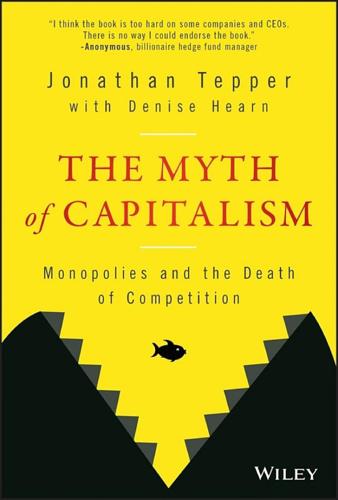
The Myth of Capitalism: Monopolies and the Death of Competition
by
Jonathan Tepper
Published 20 Nov 2018
Chapter 5: Silicon Valley Throws Some Shade 1. https://www.theregister.co.uk/2010/12/01/google_eu_investigation_comment/. 2. http://europa.eu/rapid/press-release_IP-17-1784_en.htm. 3. https://www.wired.com/story/yelp-claims-google-broke-promise-to-antitrust-regulators/. 4. https://www.nytimes.com/2018/02/20/magazine/the-case-against-google.html. 5. http://theweek.com/articles/693488/google-monopoly--crushing-internet. 6. https://theoutline.com/post/1399/how-google-ate-celebritynetworth-com. 7. https://www.idc.com/promo/smartphone-market-share/os. 8. https://www.netmarketshare.com/browser-market-share.aspx. 9. https://www.wsj.com/articles/how-google-swayed-efforts-to-block-annoying-online-ads-1518623663. 10. https://www.rollingstone.com/politics/features/taibbi-facebook-can-we-be-saved-social-media-giant-w518655. 11. https://www.forbes.com/sites/stevendennis/2017/06/19/should-we-care-whether-amazon-is-systematically-destroying-retail/#62085ff66b1f. 12. https://www.axios.com/regulators-ftc-facebook-google-doj-advertising-5ea0f001-eca8-4f07-b7d0-6ed22782800f.html. 13. https://lpeblog.org/2017/12/06/from-territorial-to-functional-sovereignty-the-case-of-amazon/. 14. http://www.nationalreview.com/article/450476/silicon-valleys-anti-conservative-bias-solution-treat-major-tech-companies-utilities. 15. https://www.wired.com/story/heres-what-facebook-wont-let-you-post/. 16. https://www.nytimes.com/2016/11/22/technology/facebook-censorship-tool-china.html. 17. https://www.washingtonpost.com/news/volokh-conspiracy/wp/2014/12/21/facebook-should-stop-cooperating-with-russian-government-censorship/. 18. http://iasc-culture.org/THR/THR_article_2017_Fall_Pasquale.php. 19. https://www.bloomberg.com/news/articles/2018-01-02/google-s-dutch-sandwich-shielded-16-billion-euros-from-tax. 20. https://moderndiplomacy.eu/2018/05/17/the-google-tax/. 21. https://www.theatlantic.com/business/archive/2016/04/corporate-tax-avoidance/478293/. 22. https://www.theguardian.com/commentisfree/2017/nov/08/tax-havens-dodging-theft-multinationals-avoiding-tax. 23. https://cyber.harvard.edu/interactive/events/conferences/2008/09/msvdoj/smith. 24. https://www.nytimes.com/2018/02/20/magazine/the-case-against-google.html. 25. https://www.theringer.com/tech/2018/5/18/17362452/microsoft-antitrust-lawsuit-netscape-internet-explorer-20-years. 26. https://www.wsj.com/articles/inside-the-u-s-antitrust-probe-of-google-1426793274. 27. https://theintercept.com/2016/04/22/googles-remarkably-close-relationship-with-the-obama-white-house-in-two-charts/. 28. https://www.recode.net/2018/1/23/16919424/apple-amazon-facebook-google-uber-trump-white-house-lobbying-immigration-russia. 29. http://www.stateofdigital.com/eric-schmidt-at-google-hearings-close-to-monopoly-but-weve-not-cooked-anything/. 30. https://laweconcenter.org/wp-content/uploads/2018/05/manne-the_real_reaon_foundem_foundered_2018-05-02-1.pdf. 31. https://www.salon.com/2015/11/24/googles_insidious_shadow_lobbying_how_the_internet_giant_is_bankrolling_friendly_academics_and_skirting_federal_investigations/. 32. https://www.nytimes.com/2017/08/30/us/politics/eric-schmidt-google-new-america.html. 33. https://qz.com/1206184/bill-gates-warns-silicon-valley-not-to-be-the-new-microsoft/. 34. https://www.npr.org/sections/thetwo-way/2017/06/27/534524024/google-hit-with-2-7-billion-fine-by-european-antitrust-monitor. 35. http://ec.europa.eu/competition/antitrust/cases/dec_docs/39740/39740_14996_3.pdf. 36. https://www.newyorker.com/magazine/2017/08/28/who-owns-the-internet. 37. https://www.cjr.org/special_report/facebook-media-buzzfeed.php. 38. https://www.theguardian.com/technology/2017/oct/23/facebook-non-promoted-posts-news-feed-new-trial-publishers. 39. https://www.socialmediatoday.com/social-networks/complete-list-facebooks-misreported-metrics-and-what-they-mean. 40. https://www.socialmediatoday.com/social-networks/complete-list-facebooks-misreported-metrics-and-what-they-mean. 41. https://nypost.com/2016/11/03/facebook-sued-over-its-fraudulent-ad-metrics/. 42. https://www.broadcastingcable.com/news/facebook-s-video-move-may-aid-nielsen-comscore-168497. 43. http://adcontrarian.blogspot.com/2013/06/the-75-billion-ad-swindle.html. 44. https://www.theguardian.com/technology/2017/sep/07/facebook-claims-it-can-reach-more-people-than-actually-exist-in-uk-us-and-other-countries. 45. https://www.theguardian.com/technology/2017/mar/11/tim-berners-lee-web-inventor-save-internet. 46. https://staltz.com/the-web-began-dying-in-2014-heres-how.html. 47. http://www.vulture.com/2018/02/how-facebook-is-killing-comedy.html. 48. https://medium.com/humane-tech/tech-and-the-fake-market-tactic-8bd386e3d382. 49. https://staltz.com/the-web-began-dying-in-2014-heres-how.html. 50. https://www.rollingstone.com/politics/features/taibbi-facebook-can-we-be-saved-social-media-giant-w518655. 51. https://www.theatlantic.com/technology/archive/2018/04/amazon-may-have-a-counterfeit-problem/558482/. 52. https://www.theatlantic.com/technology/archive/2018/04/amazon-may-have-a-counterfeit-problem/558482/. 53. https://www.forbes.com/sites/stevendennis/2017/06/19/should-we-care-whether-amazon-is-systematically-destroying-retail/#62085ff66b1f. 54. https://www.yalelawjournal.org/note/amazons-antitrust-paradox. 55. https://www.theguardian.com/technology/2015/jun/23/amazon-marketplace-third-party-seller-faustian-pact. 56. https://www.forbes.com/sites/retailwire/2014/10/30/is-amazon-undercutting-third-party-sellers-using-their-own-data/#700a08a953d8. 57. https://www.propublica.org/article/amazon-says-it-puts-customers-first-but-its-pricing-algorithm-doesnt 58. https://rainforests.mongabay.com/0202.htm. 59. https://www.rand.org/pubs/research_briefs/RB77/index1.html. 60. https://www.ncbi.nlm.nih.gov/books/NBK236347/. 61. https://www.vox.com/new-money/2017/7/11/15929014/end-of-the-internet-startup. 62. David S. Evans and Richard Schmalensee, Matchmakers: The New Economics of Multisided Platforms (Harvard Business Review Press, 2016). Kindle Edition, locations 322–323. 63. https://www.seattletimes.com/business/tech-giants-put-the-squeeze-on-startups-squelching-their-chances-of-success/. 64. https://www.theguardian.com/technology/2017/oct/20/tech-startups-facebook-amazon-google-apple. 65. https://www.recode.net/2017/5/10/15602814/amazon-invested-startup-nucleus-cloned-alexa-echo-show-voice-control-touchscreen-video. 66. https://en.wikipedia.org/wiki/Google_data_centers. 67. https://peering.google.com/#/infrastructure. 68. http://www.dailymail.co.uk/sciencetech/article-5275893/Google-reveals-plan-build-THREE-new-undersea-cables.html. 69. http://www.wired.co.uk/article/google-facebook-plcn-internet-cable/. 70. https://www.ben-evans.com/benedictevans/2017/10/12/scale-wetxp. 71. https://www.theringer.com/tech/2018/5/18/17362452/microsoft-antitrust-lawsuit-netscape-internet-explorer-20-years. 72. https://www.sfgate.com/politics/article/Microsoft-Asked-Apple-to-Knife-the-Baby-Court-2980345.php. 73. https://promarket.org/google-facebooks-kill-zone-weve-taken-focus-off-rewarding-genius-innovation-rewarding-capital-scale/.

The Costs of Connection: How Data Is Colonizing Human Life and Appropriating It for Capitalism
by
Nick Couldry
and
Ulises A. Mejias
Published 19 Aug 2019
Fourcade and Healy, “Like a Market.” 103. Gillespie, Custodians, 18–19. 104. For the user, this is via the platform’s “terms and conditions,” for the business user of the data, its application programming interface, or “API”; see Cohen, “Biopolitical Public Domain”; and Cohen, Truth and Power. On multisided platforms generally, see Nieborg and Poell, “Platformization.” 105. Helmond, “Platform Ready.” 106. On seamlessness, see Cohen, “What Privacy Is For,” 1928. Platforms play a key role in ensuring seamlessness through the “managed continuities” that they construct between multiple actors and data types (Couldry and Hepp, Mediated Construction, 200). 107.

Markets, State, and People: Economics for Public Policy
by
Diane Coyle
Published 14 Jan 2020
It is difficult to apply to them the standard competition policy approach described earlier in this chapter, because even when there are strongly competing digital platforms, they often charge a price lower than marginal cost to one group of users (often the consumers). This price structure, where one side subsidizes the other, is a key characteristic of multi-sided platforms. Think of the restaurant booking app or many accommodation sites: the consumer does not pay (although of course the suppliers’ costs get reflected in the prices they ultimately charge). Market definition is much harder too, as platforms tend to extend across many activities. Which “market” is Google in?
…
Before Facebook became the dominant social media platform in 2008, MySpace was by far the leading one. Given these examples of turnover in the identity of the dominant player, the digital giants argue that they compete for the market (rather than in the market), and are vulnerable to a new entrant with better technology. Box 2.11. Network effects and multi-sided markets Network effects (or network externalities) mean that a user of a network gains more benefit from it the more other users there are. The increase is non-linear and accelerates: if two people are using a phone network, there is one possible link. Metcalfe’s law states that the value of the network rises with the square of the number of users (the number of connections is n*(n − 1)/2 for n users).
…
(Diamond and Hausman), 324 Italy, 20, 85, 107, 114, 115 Japan, 116, 198, 203; behavioral policy unit in, 173, 185; economic planning and industrial policy in, 21, 131–32; irrigation management in, 148; nuclear energy disaster in, 86; postwar reconstruction of, 99; value of a statistical life in, 326 job market, 163 John Deere, 150–51 Kahneman, Daniel, 173, 179, 195 Kaldor, Nicholas, 14, 181 Kaldor-Hicks compensation, 14–15 Kay, John, 120, 124 Kazakhstan, 116 Keillor, Garrison, 182 Kenya, 238, 330 Keynes, John Maynard, 21, 99, 333 Kindle (e-reader), 150 Klinenberg, Eric, 156–57 Kuznets, Simon, 21 labor unions, 22, 35, 110, 118, 121, 220, 223 Laffer, Arthur, 230 Laffer curve, 230 Lake Wobegon effect, 182 Lamont, Norman, 165 Lancaster, Kelvin, 13 land reform, 166 law and economics movement, 33 Lawrence of Arabia (film), 62 Lawson, Nigel, 110 legitimacy, 145 Lewis, Michael, 303 libraries, 243 licensing, 2, 3, 31, 61, 67, 168, 241, 262; for fishing, 149; occupational, 70, 71, 263; of utilities, 103 life insurance, 203 lighthouses, 28, 142 light water reactor, 130 limited-profit corporations, 113 Lipsey, Richard, 13 Littlechild, Stephen, 122 lobbying, 49, 56, 62, 68, 80, 241–42, 256, 263–71 logging, 138, 270, 322 The Logic of Collective Action (Olson), 267 London Underground, 278, 308 Lorenz curve, 215 loss aversion, 173, 181, 199 luxury goods, 163, 165, 248 Lyft, 78–80, 263 Macmillan, Harold, 119 macroeconomic policy, 6, 21 malaria, 329 Manchester, England, 157 Mankiw, Greg, 231 marginal costs, 104 marginal effective tax rate, 234, 235, 236–37, 239 marginal rate of substitution (MRS), 39 marginal rate of technical substitution (MRTS), 37, 40 market definition, 57–58 market design, 81 market distribution, 239, 251 market failure, 1, 8, 13; conditions conducive to, 146; efficiency and, 44; in electric industry, 85; externalities as, 25; in health care, 245; industrial policy justified by, 128; government failure and, 16–18, 293–94, 302–3; Pigouvian response to, 31, 211; price of exit and, 160–61; regulation justified by, 72, 98–99 “market for lemons,” 73–74, 209 market research, 189 Marshall, Alfred, 157, 304 Marshall Plan, 21, 100 Massachusetts, 151 Matthew effect, 318 Mazzucato, Mariana, 132 McCloskey, Deirdre, 301 means testing, 206, 233–34, 235, 237, 252 Medicaid, 210, 249–50 Medicare, 210, 249, 250 mergers, 52, 55, 58, 59–60, 121 merit goods, 29 meta-analysis, 332 Metcalfe’s law, 92 Mexico, 198 micromort, 326–27 microlife, 326–27 Microsoft, 91, 93, 94, 124 Milanovic, Branko, 218 minimum wages, 206, 220, 236, 239–40 Ministry of International Trade and Industry (MITI, Japan), 131 missing markets, 101, 128, 209 Mitterrand, François, 102, 107 monetary policy, 56 monitoring, 65, 94, 113, 145; of agents by principals, 284–85; asymmetric information and, 35, 146, 285; in cartels, 57; in competition policy, 55; cost of, 303; of free riding, 155; in markets, 32, 35, 291 monopoly, 13, 47–49, 51, 57–58, 174. See also natural monopoly monopoly rents, 77, 80, 209, 223, 226, 262 moral hazard, 13–14, 210, 245–46, 250, 274, 291 multi-sided markets, 92 mutual societies, 203 MySpace, 59, 91–92, 124 national accounting, 21 National Economic Development Office (“Neddy”), 107 National Grid Company, 87 National Health Service (NHS), 205, 326; contracting out by, 247, 284; founding of, 99, 101–2, 246–47; outlook for, 248–49; pharmaceuticals and, 129; public support for, 247, 258, 284; queuing and, 140, 167; successes and failures of, 247, 276; targets set for, 282 National Institute for Health and Care Excellence (NICE), 326 National Institutes of Health (NIH), 132 nationalization, 21, 22, 98–102; failures of, 109–10 National Oceanic and Atmospheric Administration (NOAA), 305, 320 National Power, 87 National Science Foundation (NSF), 131 national security, 56 natural gas, 86 natural monopoly, 8, 18–19, 29, 44; competition policy and, 45, 61, 72, 98–99, 135; consumer choice and, 188; defined, 104; digital platforms as, 46, 60, 91–95, 124, 128; dilemmas of, 111, 122–24; electric industry as, 83–91, 98; features of, 105; nationalization justified by, 103; price of exit and, 160–61 negative income tax, 236, 237 Nepal, 144 Netflix, 94 Netherlands, 21, 30, 100, 284 net present value (NPV), 306, 309–10 network externalities, 29, 52, 91, 92, 124, 167–68 neuromarketing, 181 New Deal, 100, 204 new public management, 280–81 New York City, 154–55 New Zealand, 187, 196, 198 1984 (Orwell), 150 non-practicing entities (NPEs), 151 non-profit corporations, 35 non-rational choices, 24, 72, 175–76 non-use value, 321 Nordhaus, William, 314 Northern Ireland, 282, 284, 290 Nuclear Electric (British Energy), 87 nuclear power, 84, 86, 87, 88, 108, 130 Nudge (Sunstein and Thaler), 173 nudging, 172, 173, 174, 176, 179, 185, 189, 190; critiques of, 195–99 nuisance, 25 Obama, Barack, 63 obesity, 197, 198 oil and gas.

Platform Capitalism
by
Nick Srnicek
Published 22 Dec 2016
. | Series: Theory redux | Includes bibliographical references. Identifiers: LCCN 2016023187 (print) | LCCN 2016036308 (ebook) | ISBN 9781509504862 (hardback) | ISBN 9781509504879 (pbk.) | ISBN 9781509504893 (Mobi) | ISBN 9781509504909 (Epub) Subjects: LCSH: Information technology--Economic aspects. | Business enterprises. | Multi-sided platform businesses. | Capitalism--History. Classification: LCC HC79.I55 .S685 2016 (print) | LCC HC79.I55 (ebook) | DDC 330.12/209--dc23 LC record available at https://lccn.loc.gov/2016023187 The publisher has used its best endeavours to ensure that the URLs for external websites referred to in this book are correct and active at the time of going to press.

Platform Scale: How an Emerging Business Model Helps Startups Build Large Empires With Minimum Investment
by
Sangeet Paul Choudary
Published 14 Sep 2015
The Platform Canvas Figure 17f PULL-FACILITATE-MATCH AND THE PLATFORM CANVAS The design of tools and services should closely align with the three roles of the platform: pull, facilitate, and match. The platform must ensure that it pulls, facilitates, and matches users on an ongoing basis and designs its tools and services to do so. MULTI-SIDED PLATFORMS WITH MULTIPLE INTERACTIONS Some platforms focus almost entirely on enabling one core interaction, but many platforms have more than one interaction. These platforms enable edge interactions around the central core interaction. The architecture of these platforms must evolve one interaction at a time.

The Hype Machine: How Social Media Disrupts Our Elections, Our Economy, and Our Health--And How We Must Adapt
by
Sinan Aral
Published 14 Sep 2020
For example, people over 65 valued connections to younger users more than the other way around; men aged 45 to 54 valued women aged 25 to 54 more than the women valued the men; and almost everybody valued men aged 25 to 34 more than those men valued others. Seth G. Benzell and Avinash Collis, “Multi-sided Platform Strategy, Taxation, and Regulation: A Quantitative Model and Application to Facebook,” MIT Working Paper, 2019, https://pdfs.semanticscholar.org/9d69/1d88bd56c09006d903255129f858d0109ec6.pdf. “Orkut…is considered a close-knit community”: Yong-Yeol Ahn et al., “Analysis of Topological Characteristics of Huge Online Social Networking Services,” in Proceedings of the 16th International Conference on World Wide Web (New York: ACM, 2007), 835–44.

Everything for Everyone: The Radical Tradition That Is Shaping the Next Economy
by
Nathan Schneider
Published 10 Sep 2018
“Making the democratic most of the Information Age,” Roszak wrote, “is a matter not only of technology but also of the social organization of that technology.”10 The modes of social organization have been shifting. Industries that once built, distributed, and sold things are giving way to a new breed of business models, which go by the allegedly neutral, blank-slate name platforms. These platforms are multi-sided markets that connect people—to rent spare rooms, to share news, to do jobs—reaping fees from our transactions and artificial intelligence from the data of our use. They are finding their way into ever more areas of our lives. In 2016, as many as 24 percent of US adults reported earning income over online platforms.
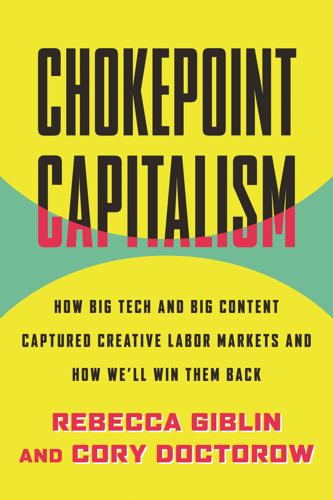
Chokepoint Capitalism
by
Rebecca Giblin
and
Cory Doctorow
Published 26 Sep 2022
Matwyshyn, “The Internet of Bodies,” William & Mary Law Review 61, no. 1 (2019), https://scholarship.law.wm.edu/wmlr/vol61/iss1/3. CHAPTER 3: HOW NEWS GOT BROKEN 1. Adam Lashinsky, “Burning Sensation,” CNN, Dec. 12, 2005, https://money.cnn.com/magazines/fortune/fortune_archive/2005/12/12/8363113/index.htm. 2. Robert Seamans and Feng Zhu, “Responses to Entry in Multi-Sided Markets: The Impact of Craigslist on Local Newspapers,” Management Science 60, no. 2 (Feb. 2014): 476–93, https://www.hbs.edu/faculty/Pages/item.aspx?num=45143. 3. Pew Research Center, “Newspapers Fact Sheet,” July 9, 2019, https://www.journalism.org/fact-sheet/newspapers. 4. Paris Marx, “Big Tech Can’t Save Journalism.
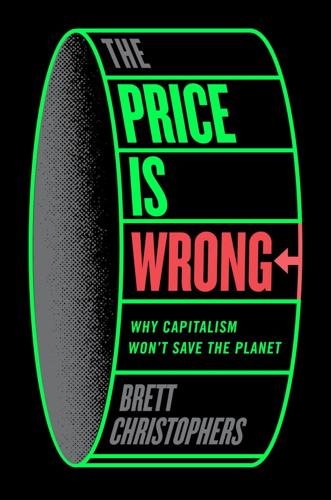
The Price Is Wrong: Why Capitalism Won't Save the Planet
by
Brett Christophers
Published 12 Mar 2024
Nevertheless, they should still be understood as a form of marketization, not as an alternative to marketization. Although PPA contracts occasionally attract a degree of price regulation, they are fundamentally a market phenomenon, only representing a different type of market – not a formal, organized, exchange-based, multi-sided market, but rather an informal, ‘over-the-counter’, bilateral market. Indeed, the introduction of corporate PPAs sometimes represents a country’s first tentative step towards marketization of the electricity sector more generally, especially in non-Western territories. Marketization was the front on which the reform of non-Western electricity sectors generally progressed the least far in the 1990s.

The Age of Surveillance Capitalism
by
Shoshana Zuboff
Published 15 Jan 2019
In 2016, 89 percent of the revenues of its parent company, Alphabet, derived from Google’s targeted advertising programs.89 The scale of raw-material flows is reflected in Google’s domination of the internet, processing over 40,000 search queries every second on average: more than 3.5 billion searches per day and 1.2 trillion searches per year worldwide in 2017.90 On the strength of its unprecedented inventions, Google’s $400 billion market value edged out ExxonMobil for the number-two spot in market capitalization in 2014, only sixteen years after its founding, making it the second-richest company in the world behind Apple.91 By 2016, Alphabet/Google occasionally wrested the number-one position from Apple and was ranked number two globally as of September 20, 2017.92 It is useful to stand back from this complexity to grasp the overall pattern and how the puzzle pieces fit together: 1. The logic: Google and other surveillance platforms are sometimes described as “two-sided” or “multi-sided” markets, but the mechanisms of surveillance capitalism suggest something different.93 Google had discovered a way to translate its nonmarket interactions with users into surplus raw material for the fabrication of products aimed at genuine market transactions with its real customers: advertisers.94 The translation of behavioral surplus from outside to inside the market finally enabled Google to convert investment into revenue.